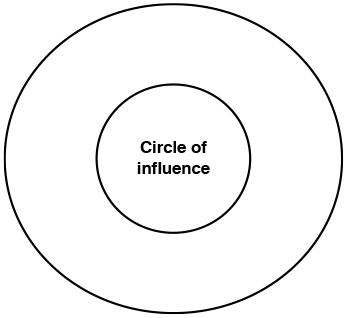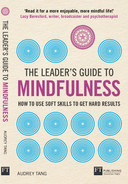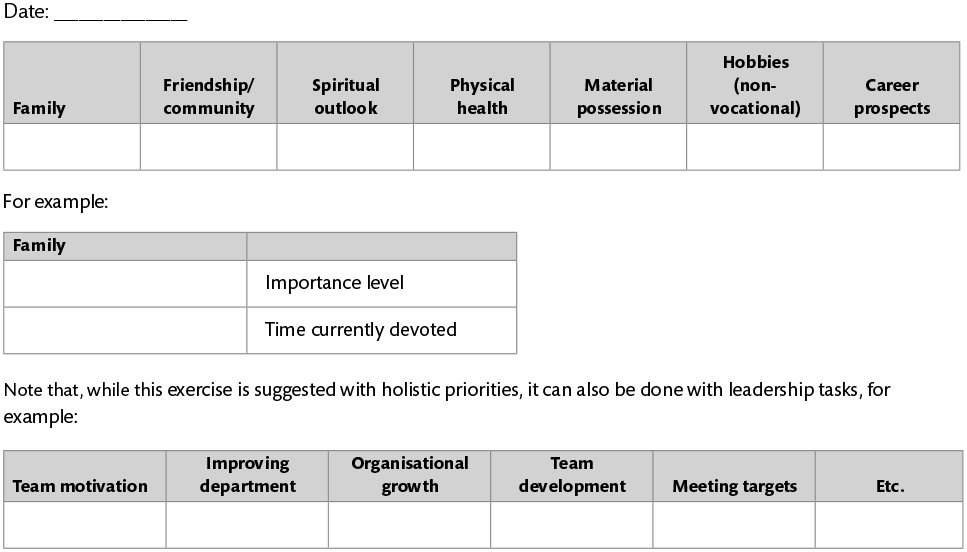Be aware of your limitations
The opening questions
- Have you ever tried to ‘bluff’ your way out of a difficult situation? Why?
- Have you ever said ‘I can do that’ only to find you couldn’t? What did you do then?
- What did you learn from either of the two experiences? (And have you ever done it again? If so, why?)
- Thinking about your current role, which areas do you dislike or want to improve?
Effective leaders are mindful of their limitations
To be aware of limitations is already to be beyond them.
Georg Wilhelm Friedrich Hegel
As a leader, you probably always encourage your teams to ask questions and to be aware of what they do not know so that they can find out. But how much time do you take to do this for yourself? Having to perform a number of tasks within a high-pressure environment can sometimes make you feel as if you are always pushed to the edge of your capability. While this can be exhilarating – and you may even thrive on such adrenaline – taking time to pause, think and learn is essential to avoid derailment.
Leadership derailment is the leader who is ‘… thrown off course’ or ‘unable to move forward’ (Furnham, 2013). This might include being demoted or failing to reach a promotion – even failing unexpectedly when it was thought that you would reach a higher position. Derailment can occur when a leader is unable to adapt their skills to organisational changes or demands. It is maintained when the leader refuses to believe that such adaptive behaviour is in their power to manage.
Furnham goes on to explain that even the leaders with positive skill sets have a ‘dark side’ that can impact the performance of their positive skills:
- A leader who prides themselves on integrity may be rigid or consistently impose their views on others.
- The leader who is ‘innovative’ may be unrealistic or have little attention to the demands they place on people, materials or budget.
- The customer-focused or even team-focused leader can be overly ‘soft’ and unable to make difficult decisions that would ‘upset someone’.
Try this exercise.
EXERCISE 9.1
List your top three qualities that make you a good leader:
| Top three qualities | The dark side |
| 1. 2. 3. |
Now list what the ‘dark side’ (your potential derailment factors) may be.
It is worth doing a mini-audit on your derailment factors because they can change over time. It is very possible that something which may not have caused you any problems a few years ago is suddenly currently troubling. Similarly, you may have worked so hard on some of the factors that you have overcome them or the climate has evolved and your efforts may be better placed elsewhere.
Your team can benefit too
It is not just you who will benefit from this heightened awareness. You will also benefit your team if they are encouraged to identify their potential derailment factors and also if you take them into account when you are considering them for promotion.
Recruiting to a position is the area which, if you do it correctly at the start, saves a number of problems further down the line.
Try this exercise.
EXERCISE 9.2
Keep on track with mindful succession planning
- Think about opportunities which might be arising within your organisation.
- List the skills needed for the role now and within the future organisational goals, identifying explicitly any areas of change, i.e. will a job grow from leading a small team to a large or remote team?
- List who you would consider for promotion and outline the reasons why.
- Repeat the ‘dark side’ audit for their skills – ideally, also including behaviours which you have observed as well as speculative point.
- Consider how they may affect performance as the organisation evolves.
- Identify how they might grow and develop, and how you can support and mentor their progress.
Make your decision based on this broader consideration.
As stated in earlier chapters, leadership can be a lonely place, and sometimes both motivation and conviction in your decisions can come only from yourself. This means that leaders may develop a self-belief, which can turn into arrogance if left unchecked (the ‘dark side’!) The most effective and healthy leaders are aware of their darker tendencies, work to improve them – and demonstrate this for their teams as well.
How can awareness of your skills help you?
Try this exercise.
EXERCISE 9.3
Thought experiment
Someone has just challenged your values. How do you respond?
- Smash them – show them who’s boss!
- Retreat – perhaps they were right.
- Find out more information – something has to be said, but let’s clarify what they meant first.
There is value in any of the approaches – in fact, there will be times when you need to respond aggressively and times when you need to draw back. However, if possible, it never hurts to find out more, especially if it can be done quickly.
If you can reply to a challenge in the first instance with an ‘escape clause’, you may find that someone behaved out of ignorance rather than malice. Through this approach, not only might graciousness gain you an ally as the situation is resolved without cost and without embarrassment, but they may respond provocatively and you have now revealed more of their hand – making them easier to fight.
Of course, there is not always time to take that path, but awareness of your immediate response will highlight your natural skill (and now also make you aware of alternative actions.) Lueke and Gibson (2016) proposed that mindfulness makes us more aware of our implicit biases and immediate behaviour choices. While meditation does not remove an ‘automatic association’, it helps the person to recognise and manage such a response. While Lueke and Gibson studied prejudice, it is also possible that we may become more aware of other unconscious processes in a similar manner.
Try this exercise.
EXERCISE 9.4
If you have five minutes, download and listen to the short mindful meditation for recognising and breaking habits.
Can you be too aware of limitations?
While awareness of limitations is important for effective leadership and development on a practical level, taking a deeper standpoint – is it possible to be too aware? Ben-Zeev (2010) warns that sometimes it is possible to be overly aware of limitations leading to incongruity and then depression. The three key incongruities are:
- Human desire is almost infinite and limitless, but human capability is both finite and limited.
- Undesirable experiences we do not want eventually may occur in our lives (Ben-Zeev cites the example of simply growing old.)
- Knowledge of what is within our capability to maintain, but that which we do not wish to pursue.
The myth ‘Work hard and you will achieve whatever you want’ can also negatively impact (and derail!) high-flying executives: ‘… in the messy real world, it is impossible to do everything perfectly at the same time. You cannot pursue all your goals simultaneously or satisfy all your desires at once. And it’s an emotional drain to think you can,’ (Sinoway, 2010).
The secret to working within human or ‘universal’ limitations, but breaking through practical ones, is being present and aware of what is under your control.
Try this exercise.
EXERCISE 9.5

Write down what you recognise to be your barriers and limitations.
Now ‘place’ or rewrite them within the circles. In the outside circle, write things over which you have no influence; within the inner circle, write those over which you have.
Pick one of the items in the circle of influence (inner circle) and identify how you can work on it:
| |
Being aware of your limitations makes you focus on what is realistic in both the practical and philosophical sense.
How do I accept I cannot really ‘have it all’?
This, for Sinoway (2010), is the hardest thing for most executives and leaders to accept. Not only are there universal limitations but, even within what you can influence, you may need to prioritise and sacrifice. Mindfulness, especially when it comes to explicitly identifying your priorities, helps you to relinquish consciously what you wish to rather than accidentally dropping something that turns out to be important to you. Sinoway identified seven key areas of priority that executives often try to balance and, being able to see which is the most important and which you are devoting the greatest amount of time to, can help you break some bad habits you may have fallen into.
Try this exercise.
EXERCISE 9.6
Look at the following table. For each category, indicate how important it is to you and then indicate the amount of time you are currently devoting to it.
In responding to the first question, explicitly ask yourself: given that I have a finite amount of time and resources, how important is this dimension to me in relation to the others?
Making what is important (and realistically achievable) explicit, as well as identifying the time you are putting into that particular area (and what you may be sacrificing to do so), will help you manage your behaviours and choices to achieve overall fulfilment. While this may still not mean you will ever ‘rule the world’, you can at least make the corner of the universe which is under your influence more enjoyable. Real change is always healthier, both emotionally and physically, compared with wishful change!
Being aware – or mindful – of your limitations, along with your areas of strength ‘… is an important way to creating intrapersonal integrity, mental and relational health, and being [y]our best selves at work,’ (d’Aubermont Thompson, 2017). It is a way in which you can ‘pause’ life’s treadmill and focus on what really matters to you. Attending to your present situation ‘warts and all’ also prevents you from being blind-sided or derailed by habit or by behaviours which no longer serve you. This temporary moment of reflection enables the actions you take to be effective as they are deliberate and meaningful. As well as this serving you personally, approaching your leadership role holistically offers you greater overall fulfilment and, with that, longevity.
IN SUMMARY
- Taking a realistic look at your limitations means that you know the areas that you need to focus on or develop in order to stay on track.
- Sometimes the skills which make you a strong leader can have a ‘dark side’, which can throw you off course if you are not mindful of it.
- Remember that you are ‘only human’ and it is not necessarily always possible to ‘have it all’. Therefore, take the time to reflect on your priorities and how much time you are actually investing in each of them … especially the ones most important to you.
- Affording yourself time to reflect enables you to regain control of your life and the direction in which you wish to take it.
CHAPTER 9 TOOLKIT

- It is always better to recognise your own potential derailment factors and work on them before they throw you off course.
- Being aware of your limitations is a starting point for growth.
Key points to remember
- Always make time to reassess your priorities and the amount of time you are devoting to each of them.
- Sometimes take a moment to think about your response and identify if it is a habitual one.
- Try to consider alternative options to the familiar situations that you face.
Take action
| Trigger/’dark side’ behaviour | How I can mitigate it | |
| 1. | ||
| 2. | ||
| 3. | ||
| For example | Always taking the moral high ground in a dispute, making me less compassionate | Avoid seeing the issue alone and see the person. Try to vocalise when you recognise the opposing side has made a good point. |
| Also, you might consider: | ||
| • | encouraging/seeking a 360° appraisal from friends or your team | |
| • | working with a mentor/coach. | |
| 3. | Also, always consider potential derailment factors when picking your team | |
| Name | Skill | Potential/observed ‘dark side’ | Support I can offer |
What worked for me
| Date | Action |
| | |
Please use a separate piece of paper if necessary.
Meditation techniques
Guided meditation to recognise and break habits
This guided meditation will help free you from the things that are holding you back. Make sure you are sitting or lying comfortably. Switch off your phone and shut down your computer so you can get the full benefit of this time to reflect and recharge.
Breathe deeply and calmly and begin to picture a beautiful scene of sparkling water and a dock. You can hear the waves and smell the fresh air.
Breathe in through your nose and out through your mouth.
Listen to the waves, breathe that fresh air and enjoy the feeling of being so relaxed, so calm, so positive.
You look towards the dock and you see there is something on it and you move towards it.
As you approach the dock, you can see that it is a number of containers. They may be stacked, they may just be lying around.
As you get closer, you can see that they are labelled. They are labelled with all the things that have been holding you back. Look at those labels – perhaps they say fear, self-confidence, body-image, expectation … you know what those labels are – read them, see them clearly.
Even take a moment to open some of those containers. What images from that barrier do you see? Is it old school reports? Maybe it is old feelings of hurt, envy or disappointment. Maybe it is things that remind you of people who have let you down. Recognise those labels. Recognise that those things in those containers have been holding you back. Recognise also that they do not have to hold you back forever.
Breathe in through your nose and out through your mouth.
You look around the dock again and you notice a raft tied up. Close up those containers and start loading them onto the raft. Rhythmically, easily, lift, walk and load, lift, walk and load … it doesn’t matter how many there are, the raft can hold all of them. As you load, you realise that you are not tired, in fact, as you continue loading the boxes, you feel stronger and stronger – as if the weight that you have been holding onto is lifting.
Lift, walk, load.
Lift, walk, load.
Continue until all the boxes are loaded.
When they are loaded, look at the boxes on the raft, see the labels, see the things you have been carrying around with you for so long.
Breathe in the fresh air of freedom. In through your nose and out through your mouth. Enjoy that feeling of the weight you have been carrying being lifted.
When you are ready, walk to the raft. Untie the rope which is holding the raft to the dock and left the raft go.
Watch the raft as it begins to sail away, taking all the boxes with it – taking all the things that you have been carrying for so long.
Watch those boxes get smaller and smaller as they float off into the distance.
Those things in the boxes have helped you grow. Those things have helped shape who you are and they will be a part of you, but they do not need to burden you. They have served their purpose and it is ok to let them go. It is ok to free yourself and move forward, knowing you have learned whatever it was you needed to learn from them at the time.
The boxes on the raft get smaller and smaller until they disappear and now you can see just the sparkling water – fresh and clear.
Breathe in that sensation of freedom and letting go.
Whenever you feel you want to load more boxes, there will always be a raft waiting for you. Sometimes it is not the right time to let something go, sometimes you have been holding onto it for so long you have forgotten it is no longer of use to you. Do not allow those boxes – your barriers – to hold you back any longer. You have learned your lessons from them and you are allowed to move on.
When you are ready, turn away from the dock and walk back towards the room that you are in, feeling freer and positive.
Breathe in through your nose and out through your mouth, relaxed knowing that it is ok to let go.
When you are ready, open your eyes, refreshed, unburdened and ready to get on with your day.

